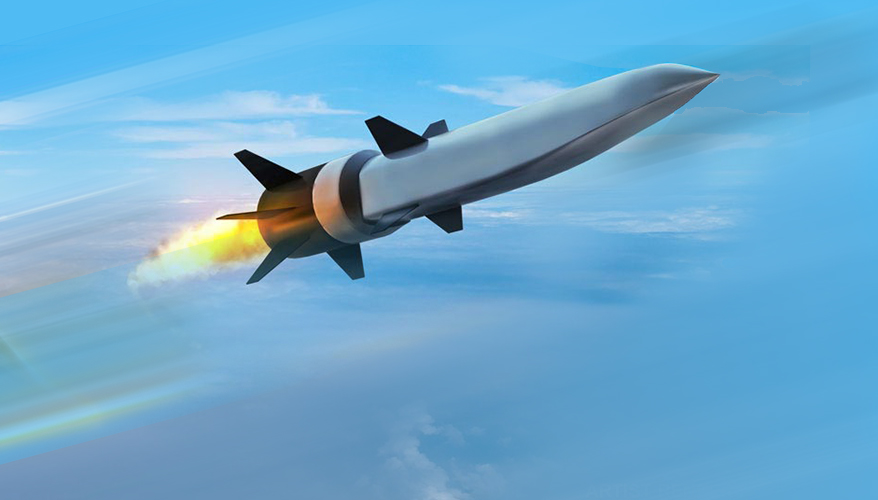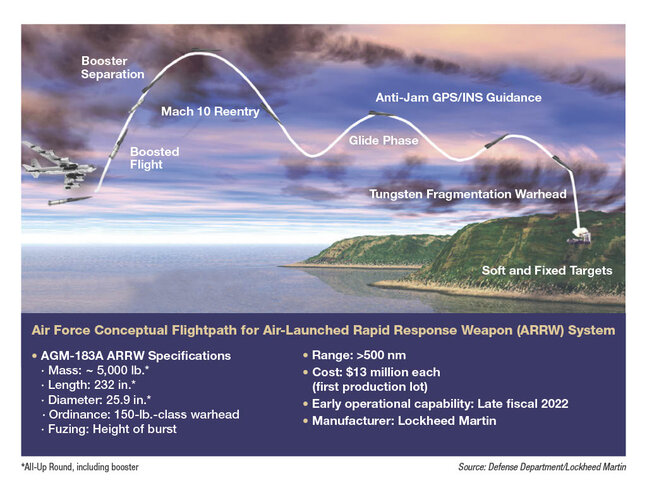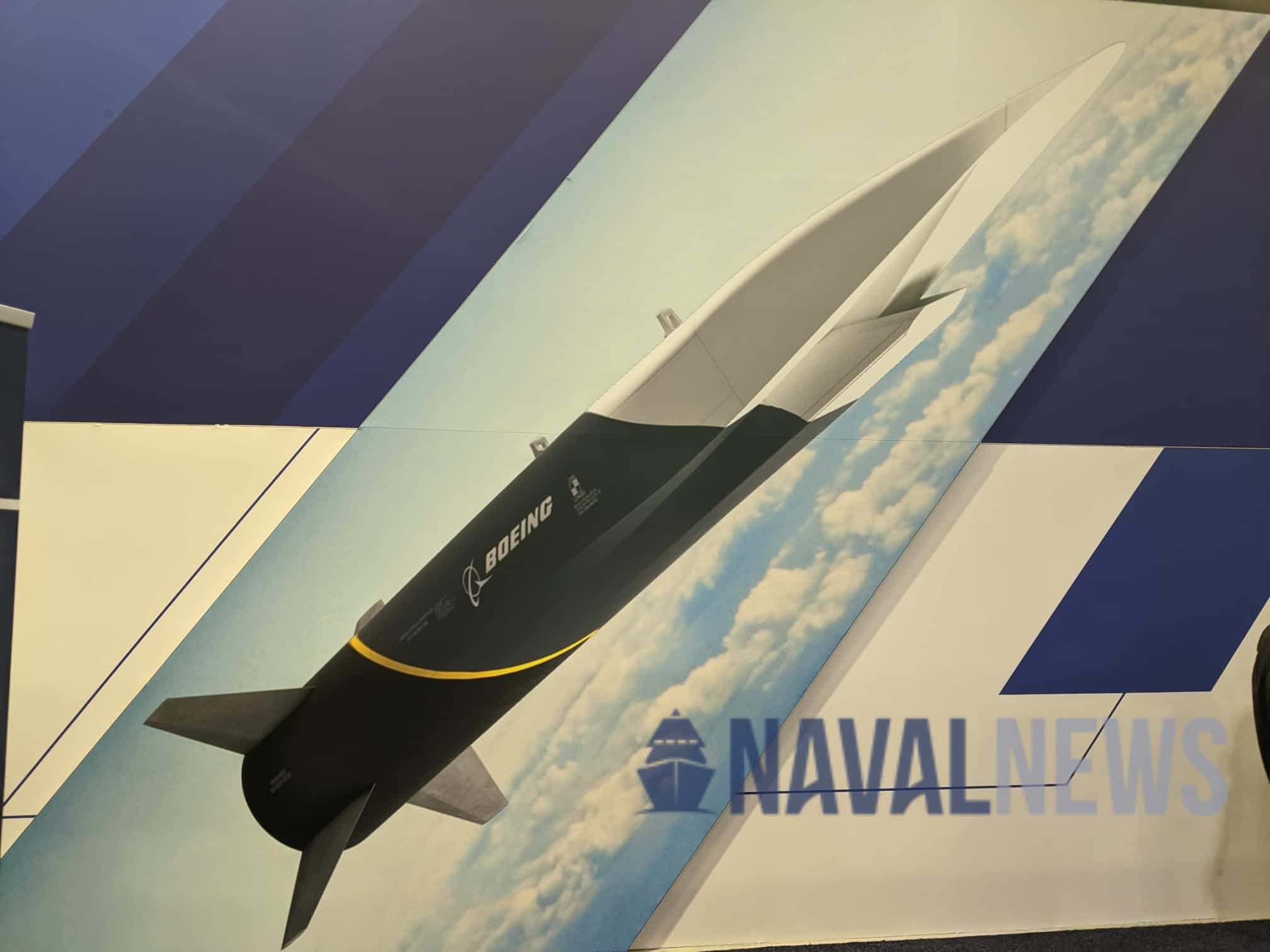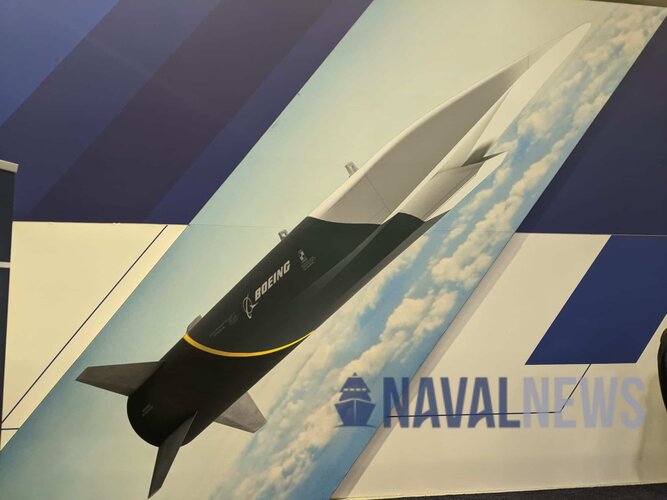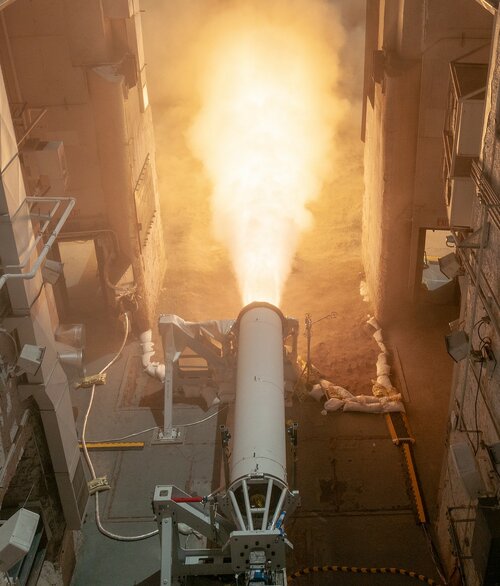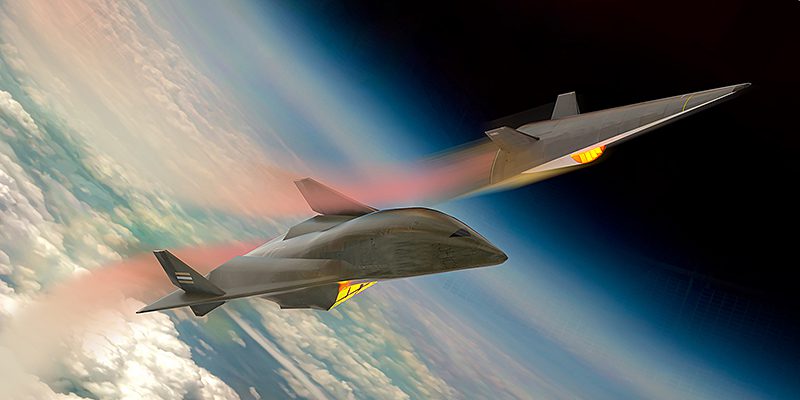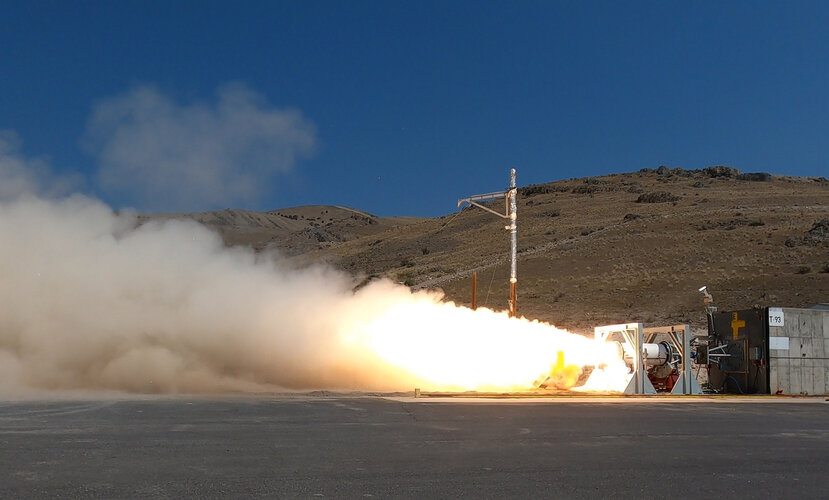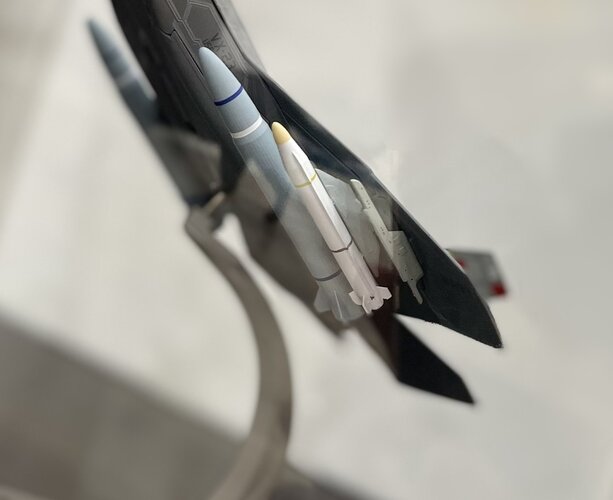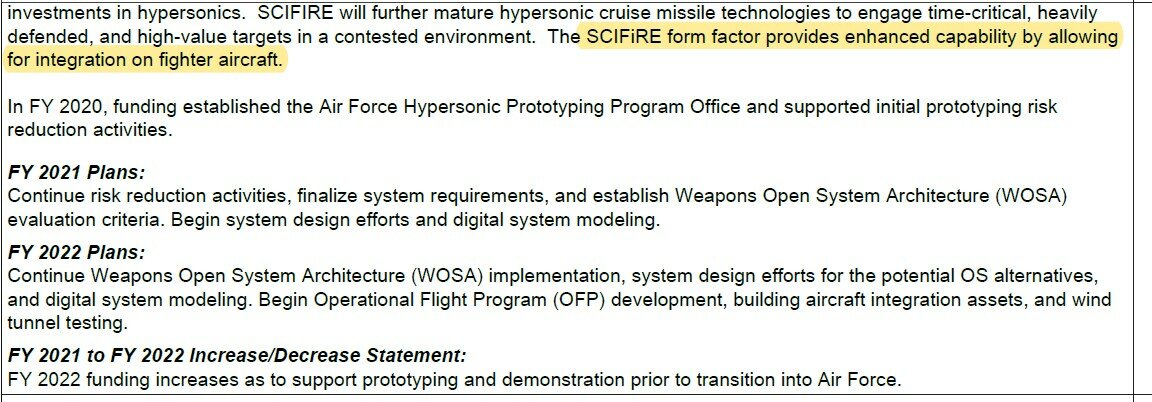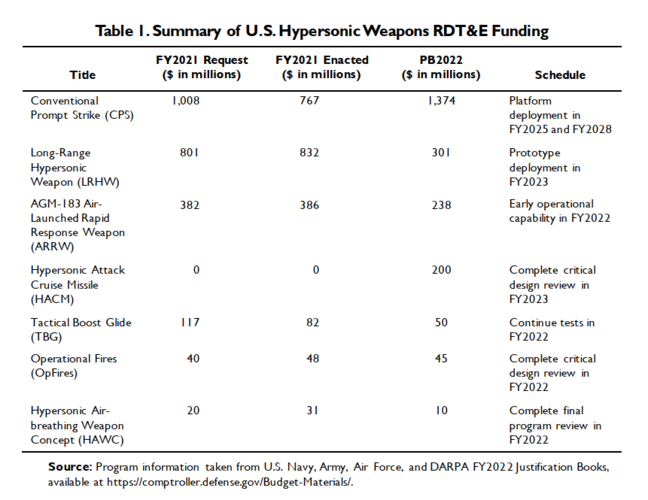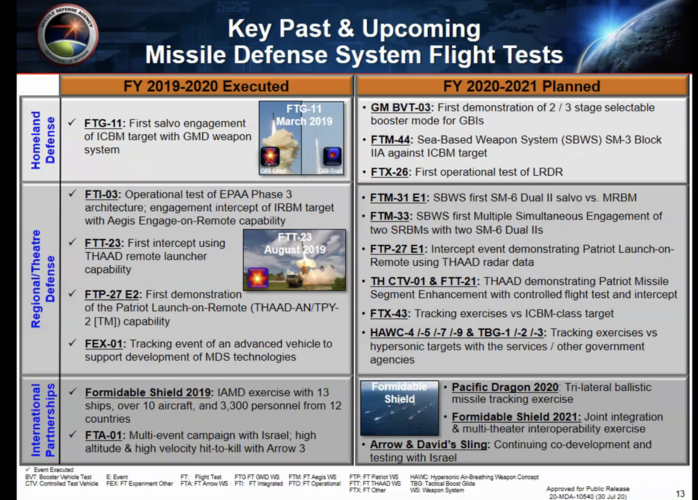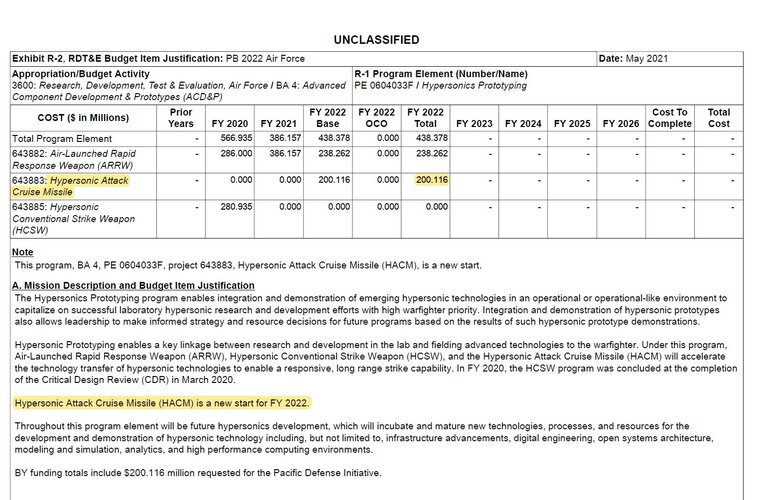Boeing Co., St. Louis, Missouri, was awarded a $39,660,399 cost-plus-fixed-fee modification (P00002) to previously awarded contract FA8682-21-C-0008 for Southern Cross Integrated Flight Research Experiment (SCIFiRE) Project Phase I Preliminary Design Review.
The contract modification is an option exercise to mature a solid-rocket boosted, air-breathing, hypersonic conventional cruise missile, air-launched from existing fighter/bomber aircraft, through the completion of a preliminary design review. The location of performance is St. Louis, Missouri. The work is expected to be completed by Aug. 31, 2022. Fiscal 2020 and 2021 research and development funds in the amount of $1,521,862 and $8,750,000, respectively, are being obligated at the time of award. The total cumulative face value of the contract is $47,153,068. Future Hypersonics, Eglin Air Force Base, Florida, is the contracting activity.
Lockheed Martin, Palmdale, California, was awarded a $27,192,571 cost-plus-fixed-fee modification (P00002) to previously awarded contract FA8682-21-C-0009 for Southern Cross Integrated Flight Research Experiment (SCIFiRE) Project Phase I Preliminary Design Review. T
he contract modification is an option exercise to mature a solid-rocket boosted, air-breathing, hypersonic conventional cruise missile, air-launched from existing fighter/bomber aircraft, through the completion of a preliminary design review. The location of performance is Palmdale California. The work is expected to be completed by Aug. 31, 2022. Fiscal 2020 and 2021 research and development funds in the amount of $1,521,862 and $8,750,000, respectively, are being obligated at the time of award. The total cumulative face value of the contract is $33,499,083. Future Hypersonics, Eglin Air Force Base, Florida, is the contracting activity.
Today's Defense Department contracts valued at $7.5 million or more are now live on Defense.gov.
www.defense.gov


